Instructional Design in Online Learning. EDLD 5318
Designing online courses is far more than transferring content to a digital platform; it is an opportunity to create environments where learning becomes meaningful, accessible, and transformative. As L. Dee Fink (2003) emphasizes, effective instructional design begins with a clear intention: to deeply align learning outcomes with authentic activities and assessments that allow students to apply, integrate, and reflect on their learning. This vision is further enriched by the backward design approach introduced by Wiggins and McTighe (2005), which starts with the desired results and works backward to design instruction that leads to those outcomes. In addition, the COVA model emphasizing choice, ownership, voice, and authenticity fosters environments where students take on an active and empowered role.
Finally, the principles of Universal Design for Learning, developed by Nelson, Kennedy, and Tippin (2021), provide practical tools to ensure that all learners, regardless of learning style or ability, can access content, express themselves, and remain engaged. This experience has not only strengthened my skills as an instructional designer, but also reaffirmed my commitment to more human, inclusive, and impactful education.
Instructional Design with Purpose: Weaving Meaningful Experiences


Designing to Transform: The Power of Meaningful Instructional Design
Instructional design is more than organizing content or outlining activities it is an ethical and pedagogical declaration about the kind of experience we want to offer our students. In an educational context shaped by diversity, inclusion, and digital transformation, designing with intention means creating learning environments that are meaningful, connected to real life, and driven by each student’s intrinsic motivation.
This document presents a student-centered instructional design proposal grounded in principles of social constructivism, experiential learning, Universal Design for Learning (UDL), and strategies such as backward design, authentic assessment, and the integration of frameworks like Outcome-Based Education (OBE) and Competency-Based Education (CBE). The design fosters autonomy, active participation, creativity, and the development of transferable competencies through experiences that blend face-to-face, virtual, and human-centered learning.
Here, instruction does not begin with content, but with the learner their story, voice, pace, and potential. Each pedagogical decision aims to support with purpose, inspire discovery, and generate impact beyond the classroom.
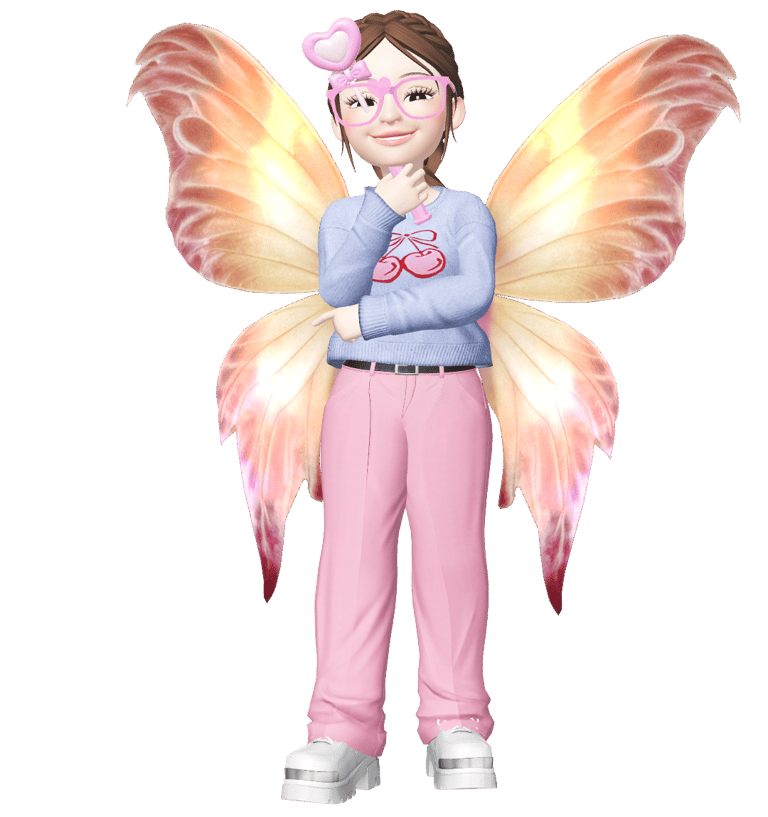

This document presents the CECII methodological model, a personal instructional design proposal developed from professional and academic experience in teaching and meaningful learning. This methodology is intended to promote active, inclusive, and transformative educational experiences by bridging theory and practice in real-world contexts.
Grounded in social constructivism, experiential learning (Kolb, 1984), and Universal Design for Learning (CAST, 2018), CECII organizes the educational process into five essential stages: Connect, Explore, Construct, Integrate, and Innovate. Each phase fosters the development of skills, pedagogical reflection, and authentic application of knowledge.
CECII also integrates principles such as voice, choice, and ownership in learning (COVA), as well as growth mindset and the purposeful use of accessible digital tools. This proposal consciously addresses the needs of diverse learners, including those with neurodivergent conditions, and positions both teacher and student as key agents of educational transformation.
Designing with CECII means designing with intention and humanity. It is about creating environments where learning becomes a process of transformation, growth, and connection with life.
CECII Methodological Approach: A Personal Proposal for Designing Learning with Purpose, Inclusion, and Transformation
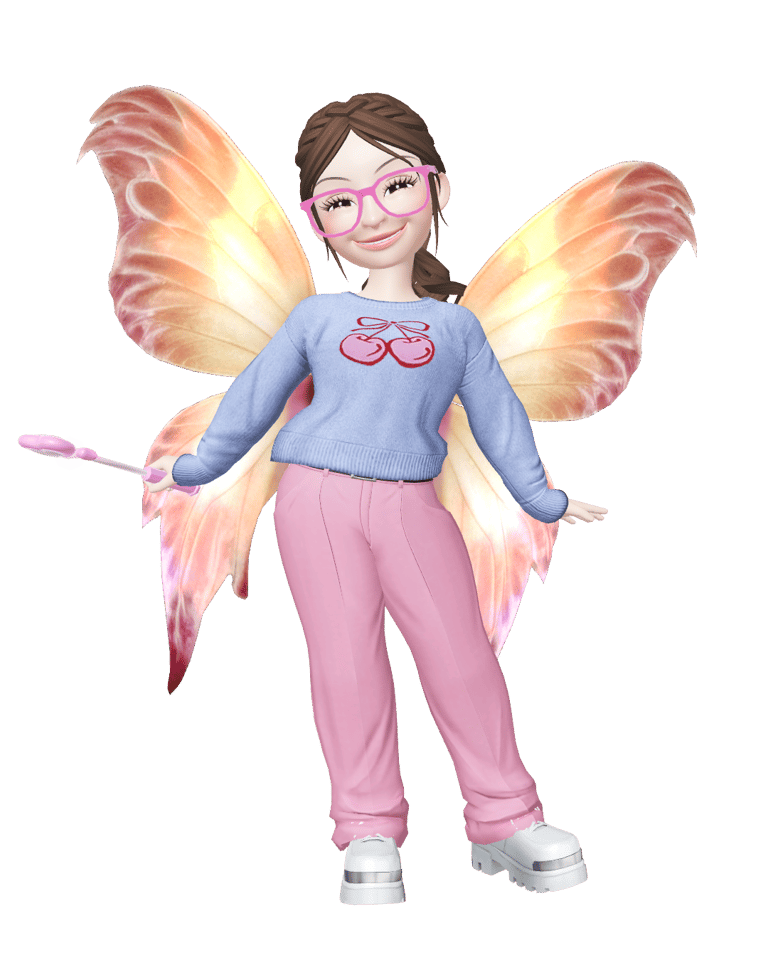

This document presents the instructional design for the course “Explorers of the Magical Forest of Reading and Writing”, developed for second-grade students and structured using the 3-column table model proposed by L. Dee Fink (2003). It aligns the course’s Big Hairy Audacious Goal (BHAG) with second-grade TEKS standards, student learning outcomes, learning activities across five progressive phases (Connect, Explore, Construct, Integrate, and Innovate), and authentic assessment strategies.
Each learning outcome is designed to foster key skills such as distinguishing fiction from nonfiction, making inferences and predictions, comparing story elements, writing original narratives, and expressing emotions through reading. The final section, “Learning How to Learn,” invites students to reflect on their reading and writing process and identify strategies for personal growth.
This design is grounded in significant learning theory, offering hybrid, creative, and accessible learning experiences that connect to students' identities, imaginations, and real-life experiences. The 3-column table clearly illustrates the alignment between learning goals, instructional activities, and formative assessment, in coherence with Fink’s (2003) instructional model.
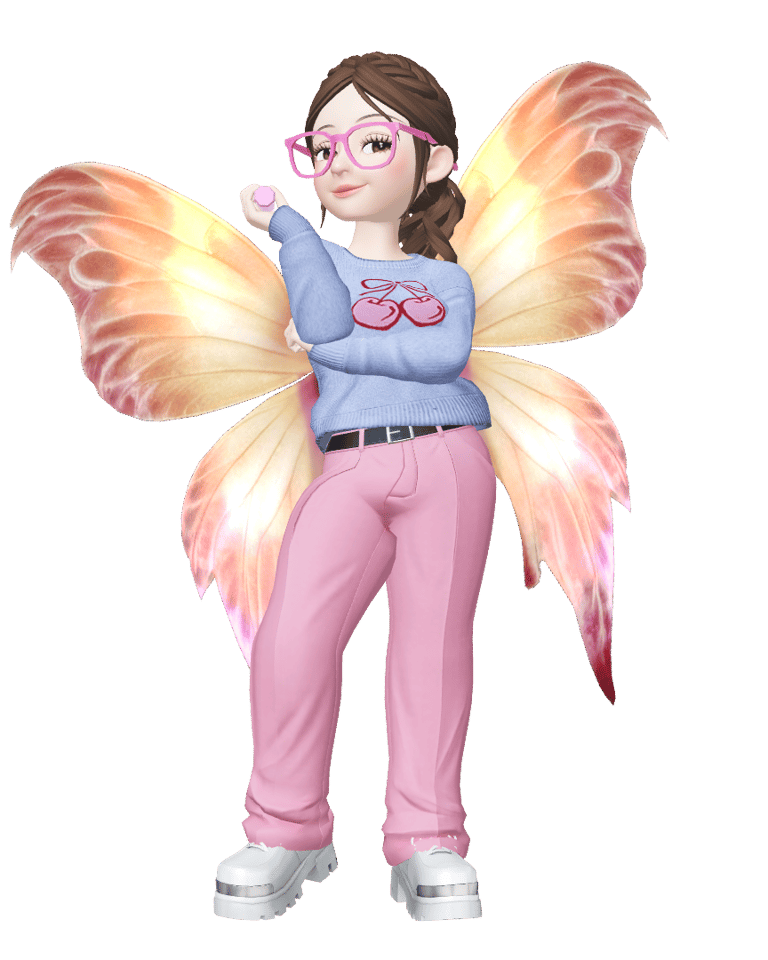

BHAG & 3 Column Table: Instructional Design for the “Explorers of the Magical Forest” Course
Course Outline and Weekly Schedule: “Explorers of the Magical Forest of Reading and Writing”
This document presents the outline and weekly schedule for the hybrid course “Explorers of the Magical Forest of Reading and Writing,” designed for second-grade students. Over the course of six weeks, it lays out a student-centered instructional plan that integrates face-to-face and digital experiences aligned with TEKS standards related to reading comprehension, inference, comparison, narrative writing, and emotional engagement.
The course design follows the CECII model (Connect, Explore, Construct, Integrate, and Innovate) and is structured using the backward design approach developed by L. Dee Fink (2003), ensuring alignment between objectives, learning activities, and assessment strategies. Each week includes creative, inclusive, and authentic learning experiences involving technology, storytelling, writing, dramatization, and reflective thinking.
This outline not only supports the development of literacy skills but also fosters students’ autonomy, author identity, and emotional connection to learning. It serves as a concrete and flexible roadmap for implementing the course in inclusive hybrid learning environments.


Learning Through Story: Syllabus for the Magical Forest Hybrid Course
Explorers of the Magical Forest of Reading and Writing
This syllabus outlines the hybrid course Explorers of the Magical Forest of Reading and Writing, designed for second-grade students. The course is grounded in the CECII pedagogical model (Connect, Explore, Create, Integrate, Innovate), the principles of Outcome-Based Education, and instructional frameworks such as UDL, authentic assessment, Backward Design, SAM, and significant learning theory.
Throughout this magical journey, students are guided by the Fairy of Reading and Writing, a narrative character who inspires curiosity, invites imagination, and encourages exploration. Each world or module represents a specific literacy skill such as inference, comparison, or personal expression and is brought to life through story, play, and creative activities.
Students develop reading comprehension, narrative writing, critical thinking, and emotional awareness through authentic and collaborative experiences. Digital and physical tools (Schoology, ClassDojo, HMH Into Reading, I-Ready, PebbleGo) support accessibility, inclusion, and active participation across hybrid settings. This syllabus provides a comprehensive structure, including learning objectives aligned with TEKS, weekly themes, instructional strategies, assessment methods, course policies, learning materials, support systems, and communication guidelines. It fosters a respectful, inclusive, and meaningful learning community where each child becomes the hero of their own literacy journey.


Learning Through Story: An Interactive Presentation of Instructional Design for the Magical Forest Course
This interactive presentation showcases the instructional design of the hybrid course Explorers of the Magical Forest of Reading and Writing, developed for second-grade students as part of Assignment 1 in EDLD 5318: Instructional Design in Online Learning. Rooted in the CECII model (Connect, Explore, Construct, Integrate, Innovate), the course integrates storytelling, symbolic play, and authentic tasks to foster reading, writing, emotional connection, and critical thinking.
Guided by the Fairy of Reading and Writing, students navigate narrative-based learning environments where they become protagonists of their own literacy journey. The presentation outlines the course’s purpose, pedagogical foundations, 3-column design table, weekly schedule, assessment methods, and instructional strategies. It reflects the principles of Backward Design, Outcome-Based Education (OBE), Universal Design for Learning (UDL), and significant learning theory (Fink, 2003).
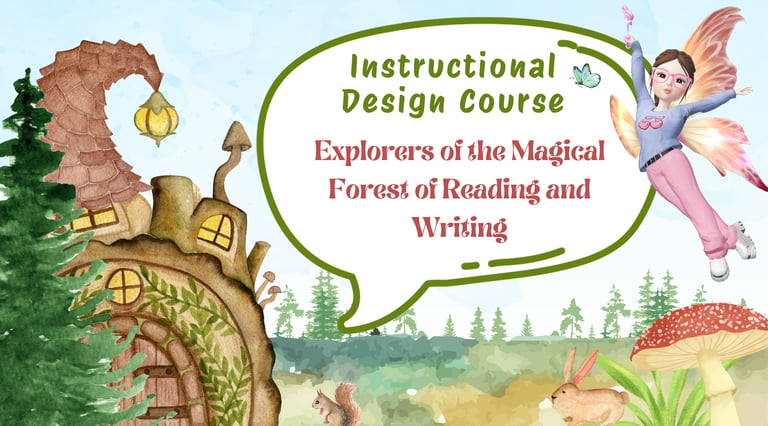


Video Presentation Course Explores of the Magical Forest of Reading and Writing
TThis video offers a clear and simplified overview of the key elements behind the instructional design of the course “Explorers of the Magical Forest of Reading and Writing.” Through a visual and story-driven presentation, it highlights the course’s purpose, instructional flow, and the pedagogical decisions that shape this creative, inclusive, and meaningful learning experience. Guided by the Fairy of Reading and Writing, you are invited to explore how each part of the design connects imagination, deep comprehension, and purposeful learning in hybrid environments.

Implementation Overview Assignment
A Hybrid Journey That Bridges Two Worlds
This course follows a blended learning model, combining asynchronous digital activities with in-person learning experiences in classroom centers. Approximately 60% of the course is asynchronous, utilizing tools such as Schoology, narrated videos, interactive games like Kahoot, and activities in the digital journal. The remaining 40% is synchronous or in-person, where students engage in dramatizations, storytelling, group reflection, and collaborative projects in learning centers. This approach allows students to benefit from the flexibility of technology without losing the value of face-to-face human interaction. Additionally, a clear implementation schedule is shared with families, indicating the start of each module and important dates for both online and in-person participation. This supports time management and strengthens home-school communication.
The Magical Beginning: The Welcome Module
This course is designed for second-grade students enrolled in a One-Way Dual Language program, meaning they receive instruction in Spanish to support the development of literacy skills. Every element of the course has been intentionally designed to support reading and writing in Spanish, while honoring the students' language and cultural identity. Upon entering the course in Schoology, students begin with the section titled “Preparamos cómo vamos a empezar esta aventura” (Preparing to Begin Our Adventure). This Start Here module serves as a welcome and orientation. It is the gateway into the Magical Forest where the narrative comes alive and essential elements of the course are introduced.
Students also receive their first creative mission in this module: decorating their Explorer’s Journal, which helps them personalize their space, express their identity, and begin to take ownership of their reading and writing journey. The entire module is designed to be accessible, engaging, and inclusive, inviting students to activate their imagination and feel safe, confident, and motivated from the very beginning.



The course integrates three key instructional design approaches:
SAM (Successive Approximation Model), which enables me to build, test, and continuously improve modules.
OBE (Outcome-Based Education), ensuring all activities align with clear learning outcomes.
CECII, my purpose pedagogical model, is structured around five stages: Connect, Explore, Construct, Integrate, and Innovate.
Additionally, the course is grounded in constructivism and the principles of meaningful learning, allowing each student to build knowledge from their experiences, emotions, and interests. All of this is implemented within a blended, active, and personalized format, fostering a learning environment that is relevant, creative, and human-centered.
Learning goals are shared in the welcome module and at the beginning of each instructional unit. They are written in accessible, student-friendly language and introduced through motivating questions and concrete examples. Additionally, the fairy Hadaly presents these goals as magical challenges, allowing students to understand the purpose of each activity in a way that feels connected to the story and meaningful to their experience.
Each module follows the Backward Design model, ensuring alignment between outcomes, activities, and assessments. Modules begin with a specific learning goal and develop through the five CECII stages. Assessments are conducted through interactive games, such as Kahoot, hands-on tasks in classroom learning centers, and creative student products, including stories, dramatizations, and journal entries.
Example: Module 1: Explorers of Fantastic Stories
Objective: Students will be able to distinguish between fiction and nonfiction texts (TEKS 2.9A).
Connect: Students watch a video of the fairy Hadaly comparing a fiction book and an informational one.
Explore: They play an interactive sorting game called “Fiction or Nonfiction?”.
Construct: They complete a digital template to identify key elements of a text.
Integrate: In centers, they dramatize scenes and match characters with settings.
Innovate: They create a poster or collage showing the differences between fiction and nonfiction and share it with the class.
Assessment includes:
Participation in the digital game
Written reflection in the Explorer’s Journal
Hands-on creation of a collage or dramatization
Sharing their work with the learning community
This example demonstrates how instruction, learning, and assessment are interconnected in an engaging, creative, and developmentally appropriate manner.


This course is completely student-centered. From the beginning, each student takes an active role in their learning. Activities are designed to allow them to explore, build, create, and share, respecting their pace and learning styles.
Through games, dramatizations, storytelling, and collaborative work, students not only acquire content but also discover their voice and strengthen their independence.
In this course, I take on the role of facilitator, mentor, and coach. I guide students through the voice of the fairy Hadaly, posing thoughtful questions, modeling reading strategies, and offering warm, constructive feedback. Rather than delivering content directly, I create a space where students feel safe to explore, make mistakes, and learn with purpose. I accompany them through each step of the journey with support, encouragement, and trust.
The learning community is strengthened through discussion forums, group activities, shared reading circles, and class celebrations, such as the Festival of Magical Stories. We also use ClassDojo to maintain close communication with families, celebrate progress, and reinforce the connection between home and school. Everything is designed to ensure that students feel supported, included, and part of a caring and magical community.



From the very beginning, the course provides technical, academic, and emotional support for all learners. I utilize accessible resources, including multi-format instructions (text, audio, and visuals), visual templates, guided examples, and printable materials. I also apply the principles of Universal Design for Learning (UDL) to accommodate diverse learning styles and individual needs.
The fairy Hadaly offers playful and emotional guidance throughout the journey. Additionally, I maintain continuous communication with families via ClassDojo, and I offer ongoing support both online and during in-person learning center sessions. Everything is intentionally designed so that every child feels capable, supported, and empowered as the protagonist of their own learning experience.
Infrastructure and Support

Implementation Video Course


Usability Testing & Reflection Assignment
Designing a course goes far beyond organizing content or integrating technology; it means creating a space where students can learn with purpose, emotion, and autonomy. In this learning experience from the course Instructional Design in Online Learning (EDLD-5318), the usability testing process became a transformative opportunity. Observing how others navigated the course I designed allowed me to identify invisible barriers, reorganize essential elements, and confirm that a digital environment must be accessible, clear, and authentic. As Harapnuik, Thibodeaux, and Cummings (2018) explain, designing authentic learning experiences requires actively listening to learners, validating their participation, and continuously adapting learning environments to make them truly meaningful.
The feedback was provided by a fellow teacher who carefully explored the course and offered valuable insights on structure, navigation, and visual clarity. Thanks to this input, the Explorers of the Reading and Writing Forest course was strengthened in terms of accessibility, assessment design (Harapnuik, 2021), and emotional engagement through narrative (Thomas & Brown, 2011). Usability testing was not a final step, it marked the beginning of continuous improvement, aimed at creating spaces where every student feels capable, supported, and empowered to take ownership of their learning.
Learning Through Design: Usability Testing Reflection
1. Who participated in the usability testing and why were they important?
For this usability testing experience, I collaborated with a fellow language arts teacher who became a true partner in observation, analysis, and course improvement. Together, we explored the course step by step, verifying that every element was functional, clear, and accessible. He recorded his journey through the course and provided a written document full of technical and pedagogical suggestions, which I’ve included as supporting evidence in this portfolio. Although I wasn’t able to include students due to summer break, I plan to conduct in-class usability testing with them in the next implementation. I also received great feedback from peers during the collaborative discussion in EDLD-5318, which further enriched the refinement process.
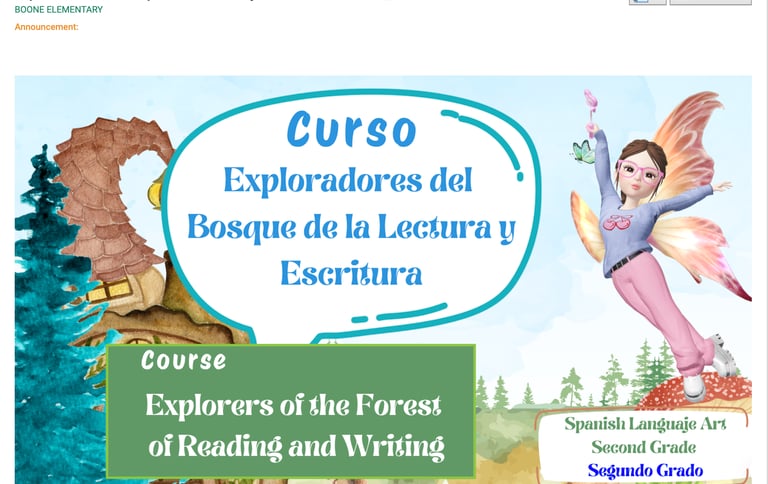


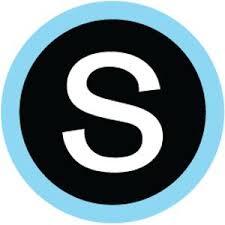

2. What did I learn about the platform, its strengths and limitations?
The course was hosted on Schoology and enhanced with external tools such as Genially, Canva, Class Dojo, HMH, youtube, Iready, and Kahoot. Among the platform’s strengths were the clear folder structure, the ease of embedding visual resources, and the ability to integrate interactive and creative tools. These resources helped foster emotional connection, engagement, and accessibility. On the other hand, a few challenges emerged. Some external buttons opened in new windows, which could be confusing for younger learners, and switching between platforms required more visual clarity and structured guidance for students and families.
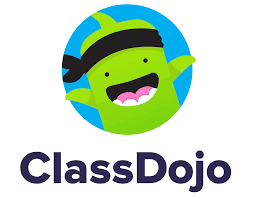

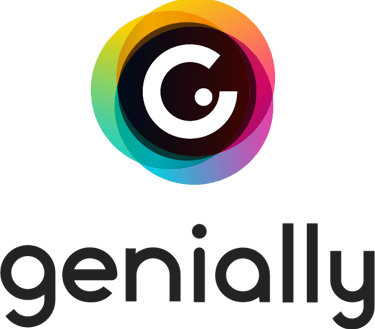

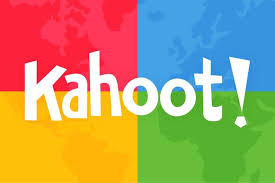



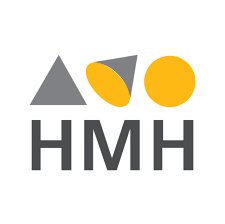

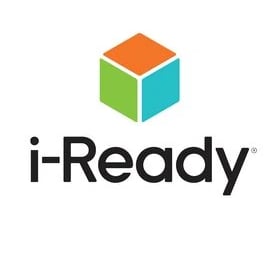



I received rich and diverse feedback from both my colleague and fellow classmates. The document submitted by my colleague (SBC, 2025) highlighted the course’s immersive potential but also noted areas for improvement, including visual navigation cues, text hierarchy, and clearer start/end points. He also recommended creating a parent video that explains their role in the platform.
3. What kind of feedback did I receive?
My classmates praised the visual clarity, the guiding role of the Reading Fairy character, the integration of TEKS standards, and the emotional and narrative value of the course. Suggestions included adding audio instructions for emergent readers and brief English translations for families who may not speak Spanish. These collective insights broadened my perspective and strengthened my design decisions
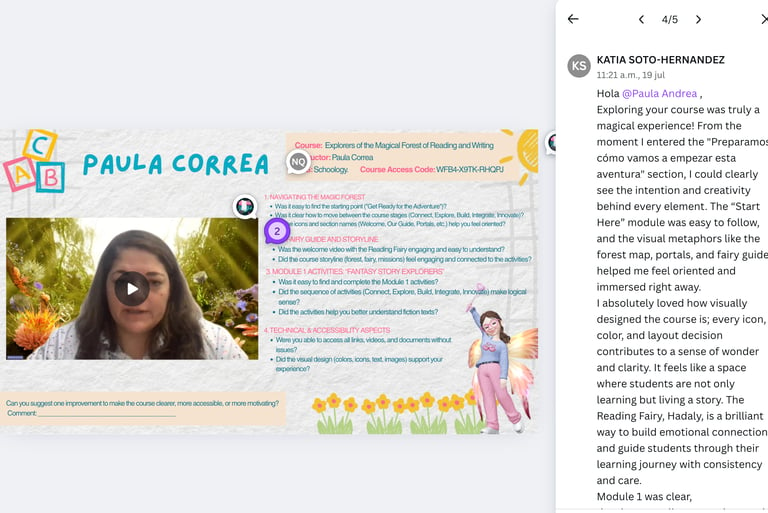



4. What changes did I make based on the feedback?
Based on the feedback received, I implemented several important changes:
I created an introductory tutorial video to guide students and families.
I increased the size of buttons and added visual numbering to support clear navigation.
I reorganized the Welcome Module to make it more intuitive and visible.
I included audio instructions to support student comprehension.
I improved visual contrast for buttons and labels to ensure accessibility.
I developed clear rubrics aligned to final products and learning expectations.
I added pictograms and key visual words in each section to support younger learners.
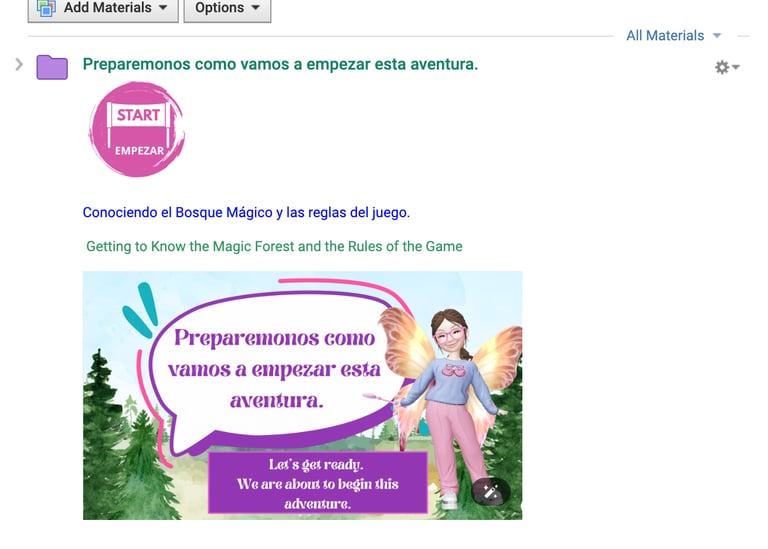

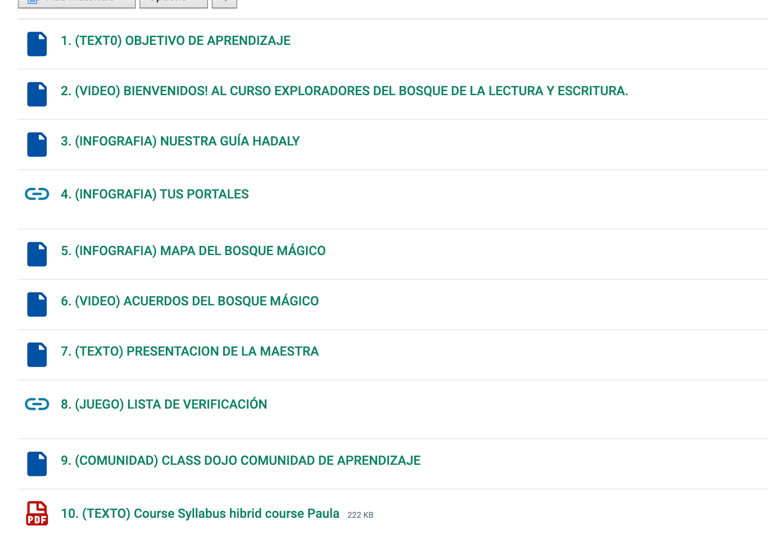


5. How did this experience transform me as a course designer?
This testing process was transformative. I no longer see myself only as a content creator, but also as a guide who builds meaningful learning journeys. Observing others interact with my design reminded me that small details matter, where a button is placed, how an instruction is worded, what emotions a screen evokes. Design is not about finishing something, but about creating a space that grows, responds, and adapts with its users. This experience taught me that usability is empathy in action.

6. How did I ensure alignment between objectives, activities, and assessment?
From the outset, the course had a solid structure that connected learning objectives, activities, and authentic assessments. However, one of the most valuable insights I received was the suggestion to align even more intentionally with the school’s curriculum and current lesson plans. I revised my modules to match specific reading and writing goals for the term, while maintaining the course’s creative and meaningful structure. This adjustment helped improve alignment with TEKS standards and daily instructional goals, and I strengthened the use of formative and summative rubrics to support authentic learning outcomes.

7. What scaffolds and supports did I provide for learners?
Accessibility and autonomy were central to my course design from the beginning. ClassDojo was already integrated as a communication tool for families, but after reviewing the feedback, I reinforced its use by creating a short explanatory video to help parents log in, follow updates, and engage meaningfully.
I also included:
A navigational tutorial video at the start of the course.
Audio instructions embedded in key activities.
Icons, pictograms, and keyword visuals to aid comprehension.
Genially, Canva, and Kahoot to offer multiple means of expression and engagement.
A consistent visual and narrative structure guided by the Reading Fairy, helping students stay oriented and emotionally connected to their learning.
Designing a course is not just about organizing content, it's an act of empathy and purpose.
Today, I understand that a well-designed environment doesn’t just teach, it welcomes, inspires, and transforms.
I am no longer just a teacher; I am a creator of spaces where every student feels seen, valued, and eager to keep learning.
Video
Usability Testing Reflection: Listening, Adapting, Transforming

What I Learned, What Challenges Me, and What I Want to Keep Building
The course EDLD 5318 taught me that instructional design goes far beyond planning activities, it’s about imagining learning environments where education becomes meaningful, accessible, and deeply human. I learned how to align outcomes, activities, and assessments through a student-centered lens, integrating frameworks such as OBE, UDL, COVA, and CSLE. I now understand that instructional design must respond to a real purpose, and for me, that purpose is to strengthen early literacy through authentic, creative, and inclusive learning experiences.
My greatest challenge now is to turn this course into a living reality within my classroom, a hybrid space where every child can discover the power of reading, writing, imagining, and expressing themselves. I want to keep refining each module, every activity, and above all, continue listening to my students, allowing their voices to guide the course’s evolution.
This project is not just an assignment, it’s a project from the heart. A dream born from my calling as a teacher, and one I wish to keep building with love, commitment, and purpose.
My goal is to continue improving this course, adapting it to the real needs of my students, and turning it into a bridge between technology, pedagogy, and educational transformation. Because when design comes from the heart, learning blossoms with meaning and joy.
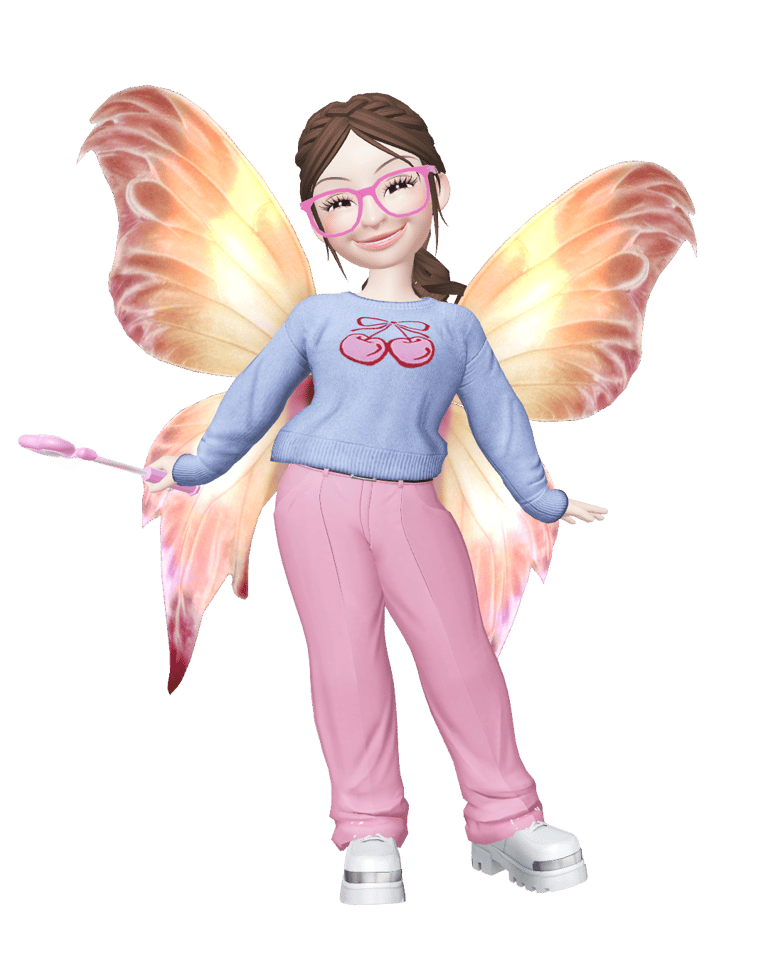


References
Bates, T. (2014). Teaching in a digital age: Guidelines for designing teaching and learning. Tony Bates Associates Ltd. https://opentextbc.ca/teachinginadigitalage/
Blackboard Inc. (2023). Blackboard Learn LMS overview. https://www.blackboard.com/
Clark, D. (2010). Instructional system design: The ADDIE model. https://www.nwlink.com/~donclark/hrd/sat.html
Correa, P. A. (2025). CECII Methodological Framework: Connect, Explore, Create, Integrate, and Innovate. Personal proposal based on principles of meaningful learning, Universal Design for Learning (UDL), and Creating Significant Learning Environments (CSLE). Unpublished manuscript.
Earl, L. M. (2003). Assessment as learning: Using classroom assessment to maximize student learning. Corwin Press.
Fink, L. D. (2003). Creating significant learning experiences: An integrated approach to designing college courses. Jossey-Bass.
Harapnuik, D. (2020, October 5). Assessment OF/FOR/AS learning. https://www.harapnuik.org/?p=10070
Harapnuik, D. (2020, November 6). Why I don’t use checklists, progress bars & other activity monitors. https://www.harapnuik.org/?p=10202
International Society for Technology in Education. (2016). ISTE standards for students. ISTE.
Harapnuik, D. (2021). Why a CSLE with COVA? https://www.harapnuik.org/?page_id=7141
Nelson, L. L., Kennedy, K., & Tippin, S. (2021). Design and deliver: Planning and teaching using Universal Design for Learning (2nd ed.). Brookes Publishing.
Quality Matters. (2022). K–12 rubric standards (5th ed.). Quality Matters.
Texas Education Agency. (2022). Texas Essential Knowledge and Skills (TEKS) for English Language Arts and Reading, Grade 2. https://tea.texas.gov/
Thomas, D., & Brown, J. S. (2011). A new culture of learning: Cultivating the imagination for a world of constant change. CreateSpace.
Wiggins, G., & McTighe, J. (2005). Understanding by design (Expanded 2nd ed.). ASCD.
Young, J. R., & Banos, A. (2021). The SAM instructional design model: Successive approximation for agile course development. Instructional Design Quarterly, 4(2), 15-24.https://doi.org/10.1002/idq.20212
U.S. Department of Education. (2020). Toward a quality model of online education. Office of Educational Technology. https://tech.ed.gov/files/2020/11/Toward-A-Quality-Model-of-Online-education.pdf
